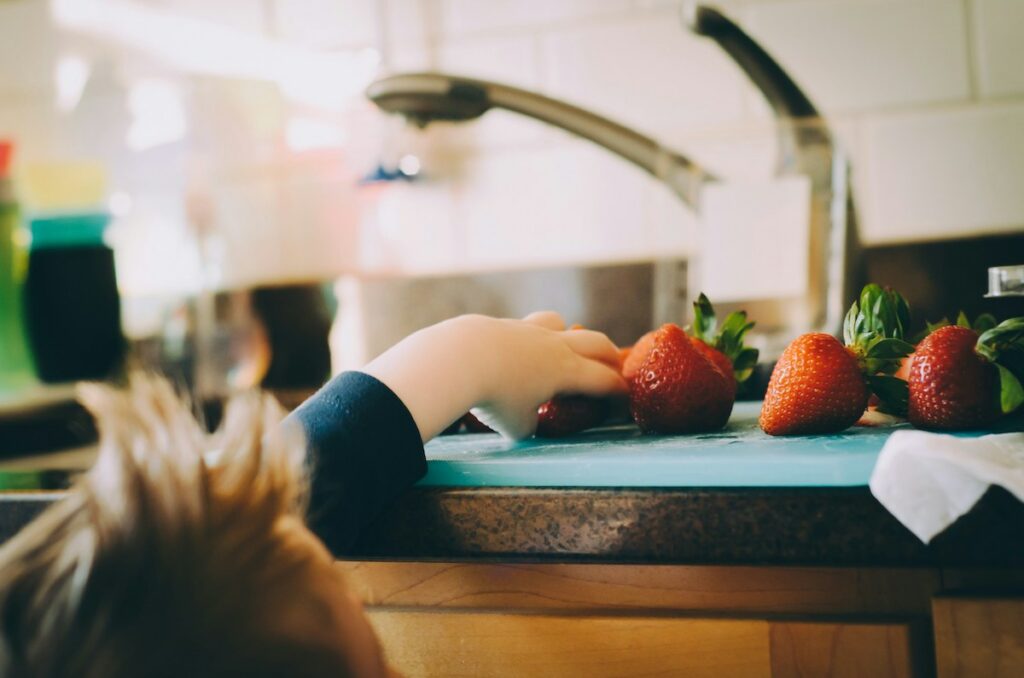A Guide to Kid-Safe Spaces

Ensuring the safety of young children at home can be quite a challenge, especially in a bustling city like San Antonio, Texas. As toddlers start crawling and exploring, every nook and cranny presents a potential danger. With often busy lifestyles, parents and caregivers in San Antonio have to be vigilant about making their homes hazard-free zones. This means taking the right precautions and using effective childproofing methods to protect these little adventurers.
Fortunately, there are best practices backed by safety experts that can help families in San Antonio keep their children safe. From securing furniture to prevent tipping, to installing safety gates and cabinet locks, there are a variety of safety devices that are not just recommended but essential. Local resources such as Southwest Children’s Clinic offer guidance on securing homes, while the National Safety Council provides eye-opening statistics to raise awareness about the risks that unchildproofed homes pose.
Childproofing Fundamentals
When it comes to childproofing, knowing the basics can make all the difference. It’s a mix of vigilance and implementing the right safety measures to keep the little ones out of harm’s way.
Assessing Potential Hazards
The first step in childproofing any San Antonio home is to look at it through the eyes of a child. This means crawling on the floor and recognizing the dangers a young child might encounter. They should inspect every room for small objects that can be choking hazards, cover electrical outlets, and secure heavy furniture to the wall to prevent tipping. Windows should have locks to prevent them from opening too wide, and stairs need safety gates to block access.
Setting Childproofing Standards
Adhering to established safety standards is crucial. San Antonio parents can ensure products like cribs, high chairs, and car seats meet current safety regulations. They can often find inexpensive safety devices that are simple to install and effective in preventing injuries. For more thorough guidance, they might refer to the Consumer Product Safety Commission’s resources or guidelines provided by the National Safety Council. These standards serve as a blueprint for what safety features should be included in the childproofing process.
Securing Different Home Areas
Ensuring the safety of each area within your San Antonio home is essential for protecting young children. Special attention to securing household features like stairs and windows can prevent accidents. Let’s explore specific measures you can implement within the core areas of your home, including the use of appliances and locks.
Living Area Safety
In the living area, sofa corners should be padded, and heavy furniture anchored to prevent tipping over. Keeping an eye on the stairs, if accessible from the living room, means installing safety gates at the top and bottom, which are crucial for preventing falls.
Kitchen Safety Measures
The kitchen is filled with potential hazards. Appliance locks help prevent children from opening ovens or dishwashers. Installing cabinet locks keeps them away from harmful substances, and stove knob covers are a must to prevent accidental turning on of the stove.
Bathroom Dangers and Protections
In the bathroom, it’s vital to set the water heater temperature to avoid scalding and use toilet locks to prevent drowning risks. Non-slip mats inside the tub can prevent falls, while medicine cabinets should always remain locked.
Bedroom Childproofing
For the bedroom area, window locks are essential to prevent falls, and furniture should be secured to the wall. Cordless window treatments are recommended to eradicate risks of strangulation, and small objects that pose choking hazards should be kept out of reach.
Basement and Garage Guidelines
The basement and garage often store hazardous materials and tools. Opt for door locks to restrict access and ensure that all poisonous substances are kept in locked cabinets. Additionally, installing smoke detectors and carbon monoxide detectors is imperative for early warning in emergencies.
Preventing Common House Injuries
In San Antonio homes, safeguarding little ones from injury is vital. An emphasis on prevention can make all the difference. Here’s a look at measures addressing some typical household hazards.
Avoiding Choking and Suffocation
Little ones are naturally curious, and this can lead to choking on small objects or suffocation. Always keep small items like coins or toys with small parts out of reach. It’s imperative to ensure that items such as plastic bags are stored securely and not left where children can access them. A helpful tip is to use safety latches and locks to secure cabinets containing dangerous items.
Protection from Falls and Trips
To protect kids from falls, secure rugs with non-slip backings and make sure stairs are gated properly. Furniture should be stable so that it can’t tip over and sharp corners may need guards to prevent painful encounters. They should anchor heavy furniture, like bookcases and TVs, to walls to help prevent tipping.
Preventing Poisoning Incidents
Household cleaners, medicines, and even plants can be poisonous to children if ingested. Keep these items out of children’s reach, ideally in high cabinets with child-resistant locks. It’s also important to have poison control’s number easily available and to educate older children about the dangers of these substances.
Safeguarding Against Burns and Scalds
The kitchen is a hotspot for potential burns and scalds. To keep kids safe, turn pot handles toward the back of the stove and use back burners when possible. Keep hot drinks and dishes away from table edges, and consider setting your water heater to a lower temperature to prevent scalding from hot tap water. Safety devices like stove knob covers may also be useful to prevent little hands from turning on the heat.
Implementing Safety Devices and Gear
Ensuring the safety of young children in the San Antonio home involves a strategic approach to installing and using various safety devices. This section will guide readers through the processes of fortifying their homes against common hazards, and the importance of selecting the right type of gear to protect children.
Effective Use of Locks and Guards
They are essential in preventing accidents in the home. Outlet covers should be installed on all accessible electrical outlets to safeguard curious fingers from electrical shocks. Likewise, using drawer locks and cabinet locks can help keep hazardous items like cleaning supplies and sharp utensils out of children’s reach. For those sharp corners of furniture, corner and edge bumpers can reduce the risk of injury from falls or bumps.
- Outlet Covers: Install on all unused outlets.
- Drawer/Cabinet Locks: Secure potentially dangerous items.
Alarms and Detectors for Enhanced Protection
Smoke detectors should be installed on every level of the home, especially near bedrooms to alert the family at the first sign of fire. Similarly, carbon monoxide detectors are critical for homes that use gas or oil heat or have an attached garage, ensuring early warning of this invisible threat.
- Smoke Detectors: Place on every level and near sleeping areas.
- Carbon Monoxide Detectors: Install near sleeping areas if there is a risk of exposure.
Installing Barriers and Safety Gates
Children are known for their explorative nature, and safety gates can provide parents with peace of mind by keeping children away from potentially dangerous areas such as staircases and kitchens. Window guards and window wedges can prevent falls from windows, while door knob covers can restrict access to rooms that may pose safety risks.
- Safety Gates: Install at the top and bottom of stairs.
- Window Guards/Wedges: Use to prevent falls from windows.
Remember, in addition to these specific safety measures, regular supervision and household safety checks are paramount in keeping a safe home.
Safety First: Childproofing Your San Antonio Home
Creating a child-safe outdoor environment means addressing potential yard hazards and ensuring strict pool safety rules. The sunny San Antonio climate allows for plenty of outdoor play, but an unsecured space can pose serious risks to young children.
Yard Hazards and Solutions
Fencing: A sturdy fence is indispensable to ensure little explorers don’t wander off. Check for and repair any gaps or damage that could allow a child to slip out. Toys: Regularly check outdoor toys for damage and store them away after use to prevent tripping hazards.
Solutions:
- Install childproof locks on gates
- Create a dedicated play area free of tools and chemicals
- Keep the yard clear of debris and sharp objects
Pool Safety and Supervision
Protection Layers: San Antonio homes with pools should employ multiple layers of protection, including fence barriers, pool alarms, and safety covers to prevent drowning.
Supervision: There’s no substitute for active supervision when children are near water. Even with safety measures in place, an adult should always be present.
Safety Measures:
- Install a 4-foot fence with self-latching gates around the pool
- Utilize pool alarms that alert you if a child falls into the water
- Always remove toys from the pool after swimming to discourage children from trying to retrieve them
San Antonio’s community is also supportive in sharing their knowledge and experience, ensuring that every child has a safe environment to grow and thrive in. The challenge is substantial, but with careful attention to safety details and the help of readily available safety devices, creating a childproof sanctuary is entirely achievable. The journey to a fully childproofed home is ongoing, but it begins with information, awareness, and a commitment to safety first.



